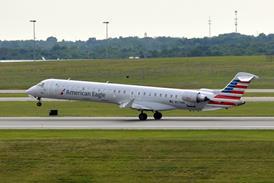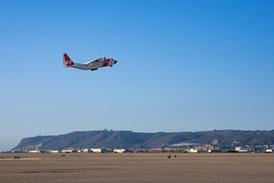Galaxy Aerospace's acquisition by General Dynamics (GD) will have taught emerging business aircraft manufacturers a lesson. You cannot sell aircraft without providing a strong and professional maintenance support network for your products.
Executive Jet chairman Richard Santulli, arguably the most powerful man in business aviation, illustrates the point perfectly. He made it clear to Galaxy president Brian Barents, that while the aircraft would be a welcome addition to the NetJets fractional ownership fleet, the company lacked the back up to support its heavy utilised aircraft, which fly an average of 1,200h a year.
Santulli's position was believed to be instrumental in bringing Galaxy and GD together, and fortunately for Galaxy, the Astra SPX and Galaxy products are complementary additions to the Gulfstream product line. When Galaxy Aerospace was formed in 1997, the major ingredient that the Pritzker family, owners of the Hyatt hotel chain, failed to bring to its partnership with Israel Aircraft Industries was an aircraft support capability. Whereas it is possible to acquire an experienced business jet sales and marketing organisation relatively inexpensively by hiring the right individuals, creating an extensive support organisation is not so easy.
There are two obvious ways of building up a support network. One is to gradually create an organic capability establishing facilities where they best meet the customer distribution, which is slow and costly. Or, a company could buy a chain of fixed based operators, which is extremely expensive and easy for a company's rivals to thwart by making their own tactical acquisitions. Either strategy would require careful development as poor service centre reputation could hamper sales of the business aircraft.
GD is taking the issue of product support seriously. Earlier this year the company formed General Dynamics Aviation Services (GDAS), as a separate entity to Gulfstream's aircraft maintenance business, following its acquisition of four regional maintenance centres from Signature Flight Support.
By keeping the two companies separate, GD hopes to boost its 10% share of the non-Gulfstream product maintenance, with its main focus on the nomadic fractional fleets like the Dassault Falcon 900 and the Bombardier Challenger. Gulfstream's own maintenance business, meanwhile has secured 70% of its market. As in other sectors of the service industry, the influence of fractional ownership on the quality of maintenance has been immense. These programmes are seeking very high standards of service which can be delivered speedily, 24h a day. Gulfstream and GDAS offer three-shift, round-the-clock coverage to reduce aircraft downtime.
As fractional fleets expand globally, as predicted, the demand for similar standards of services will increase. GDAS already has plans to widen its network, citing Europe and Asia as immediate targets.
Other leading manufacturers with fractional operations, like Raytheon, Cessna and Bombardier, already offer extensive networks of service centres, either independently or through partnerships, to support their growing fleets.
The rich pickings to be gained from maintaining competitors products may be too hard to resist and like GD, they will seek to increase their participation in this lucrative market, giving immense expansion opportunities.
The maintenance industry is likely to mirror others sector of the business aviation market, notably the completions industry, being consumed in a wave of consolidation dominated by the leading manufacturers.
The knock-on effect for the emerging, less wealthy and experienced market entrants, such as Sino Swearingen with the SJ30-2, and VisionAire with the Vantage, could be profound. As the leading players continue to push the boundaries, in quality and market dominance, it will make it increasingly difficult for smaller companies to compete without selling sufficient numbers of aircraft to make it worthwhile for the big maintenance networks to support their fleets.
Another uncertainty is the effect major airlines like United Airlines will have on the maintenance and support structure. United may order up to 200 aircraft and one unknown is whether it will approach maintenance as a problem or an opportunity.
Source: Flight International























